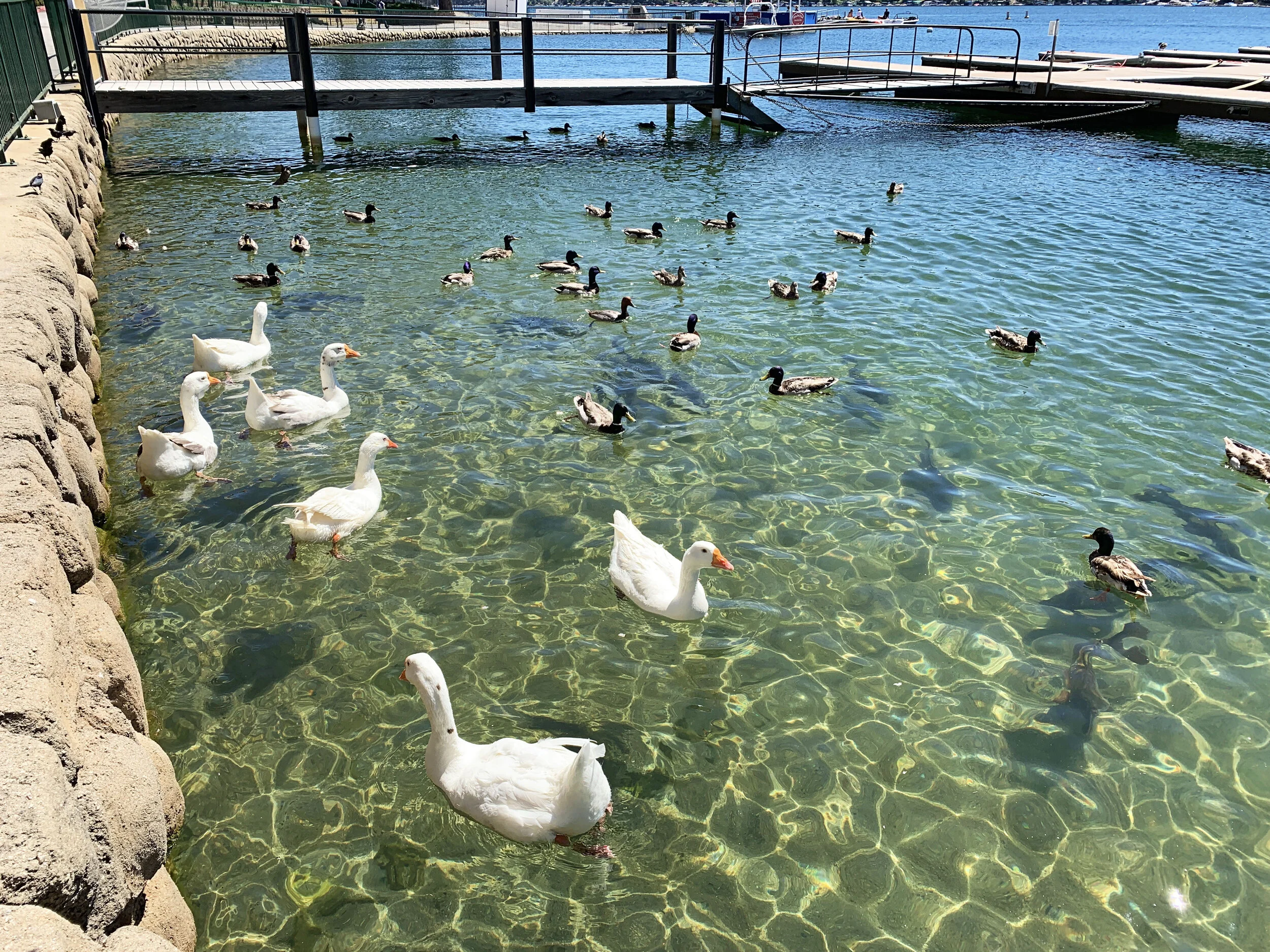California Baseball: Day 17
Lake Arrowhead & Big Bear
Two and a half weeks into a travel journey, it’s nice to have a little vacation from your vacation.
I woke up the morning after the Inland Empire 66ers game with a big gap of open time before my next and final Minor League experience in next-door Rancho Cucamonga. I could have decided to stay in my hotel and do nothing, but I actually find it more relaxing to go somewhere and do nothing.
I hopped into my Hyundai and drove up Highway 18 north into the San Bernardino Mountains, which are covered by the pines, firs, cedars, junipers, and oaks of the San Bernardino National Forest. As I climbed above the smogline, Spanish broom bushes in bloom, gleaming late into June, bedecked the roadside in vibrant yellow. The brooms are not a native species, but were planted here because they help prevent erosion and are resistant to insects. I stopped for a view over the bushes, onto the dusky foothills bearing the brunt of the urban haze below.
I continued up the mountain and into the forest proper, winding through the pines before filtering down to Lake Arrowhead Village, a resort community on the privately owned Lake Arrowhead Reservoir. The village is sustained entirely by tourism, and so is mostly a collection of shops, restaurants, and tour services. I strolled aimlessly around the water’s edge, clearing my mind, replacing itineraries and statistics with the physical sensations of cool air and the spotless azure sky. I observed mallards and geese on a morning swim — their gliding elegance betrayed by the clear lake water, which revealed the webbed chaos paddling madly below. I breathed.
I returned to my car and drove east for about 40 minutes to Big Bear Lake, ascending from 5,000 feet to 6,700 feet above sea level. Big Bear is an incongruous piece of Southern California: About 60 miles from the beach, its lake is fed entirely by snowmelt and is circled to the south and west by popular ski resorts. Just a bit to the southeast lies San Gorgonio Mountain — at 11,503 feet, the tallest peak in Southern California .
Big Bear Lake is named for what used to be a significant population of grizzly bears in the area. The indigenous Serrano Indian tribe, which lived in the area for about 2,500 years and called the territory "Yuhaviat" ("Pine Place"), considered the bears to be their ancestors and let them be. European settlers first discovered the lake in 1845, during an expedition to hunt down Indians led by future Los Angeles mayor Benjamin Wilson. The California Gold Rush increased traffic into the mountains. By 1908, the grizzlies had been wiped out completely. Black bears were introduced in the 1930s and can still be found in the area, but the big bears are gone.
I circled the lake clockwise before stopping in the town of Big Bear Lake for an Asian Chicken Salad and a glass of Chardonnay at Santana Mavericks Bar and Grill. I had a nice spot alone on the patio, with a decent view of the lake. I had plenty of free time stretching out before me. I took another deep breath (and another sip of Chardonnay).
I then headed back west along the south side of the lake, stopping for a few photos, watching families setting up their picnics in the shade, a perfect summer day releasing its joy to us all.
As I made my way back down the San Bernardino Mountains, I stopped one last time to savor the broom bushes, pressing their lemon-colored radiance into my memories. My morning meander had been about absorbing, not processing; about just being amongst this natural beauty, without analysis or obligations. A slow inhalation up the mountain. A breath held to experience the place. A slow and sustained exhalation upon descent.













